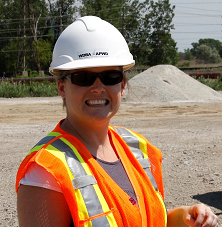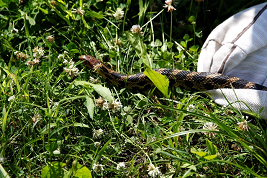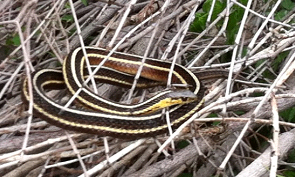
Lindsay Bennett, WDBA, Environmental Compliance Specialist
July 16 each year, marks World Snake Day. With over 3400 snake species in the world, these fascinating creatures deserve to be celebrated.
According to Lindsay Bennett, Environmental Compliance Specialist for Windsor-Detroit Bridge Authority (WDBA) “historically snakes are often misunderstood.” Lindsay said, “World Snake Day was created to help people learn more about these animals and how much they contribute to the world as they play an important role in maintaining a balanced ecosystem.”
About 14 different snake species make their home in Windsor-Essex. With respect to World Snake Day and the Gordie Howe International Bridge project, five snakes in particular - Dekay’s Brownsnake, Eastern Gartersnake, Northern Water Snake, Eastern Foxsnake and Butler’s Gartersnake have made their habitat in close proximity to the project site. WBDA is committed to protecting each of these species and have specific protocols in place for managing and relocating the wildlife found on the site.
Of the five species, two snakes have great significance because they are considered species at risk. These are the Butler’s Gartersnake and the Eastern Foxsnake. Both are also listed as endangered species under the Species at Risk Act (SARA). The purposes of the SARA are to prevent wildlife species in Canada from disappearing, to provide for the recovery of wildlife species that are extirpated (no longer exist in the wild in Canada), endangered, or threatened as a result of human activity, and to manage species of special concern to prevent them from becoming endangered or threatened.


WDBA installed an exclusion fence around the Canadian Port of Entry project site to prevent wildlife, including snakes, from accessing active construction areas. This exclusion fence is made of a special geotextile fabric that is unclimbable by snakes and is dug into the ground to prevent burrowing wildlife from accessing the site. Every day before work starts the active construction area is inspected by a qualified environmental monitor. If any wildlife is found it is safely removed and relocated back into its natural habitat. To date, WDBA has successfully relocated well over 60 snakes, one of which was identified as an endangered species at risk.



